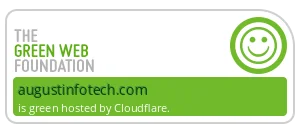The Rules of Proper Communication in Sales and Business Etiquette
Today, more than 293 billion emails get sent and received per day, and many of those emails involve business communication.
Do you know how to use proper business etiquette in both written and spoken communication?
Without the right corporate etiquette, you can easily lose clients and potential customers with a single email, call, or conversation. Meanwhile, great etiquette can help you convert leads into the clients and customers you need.
That’s why we’ve put together this list of the most important business etiquette tips. Read on to learn exactly how to impress people with your business communications this year.
Address People by Name
A generic email or social media message opener like “To whom it may concern” falls flat, and can quickly get your message deleted. With the internet at your disposal, there’s no excuse for not finding out a contact’s name.
Using someone’s name in person also sounds warmer and more personal. Address people by name in all of your messages and conversations, and they’ll be much more likely to respond positively.
Read: How to Increase Sales using Social Media
Greet the Client
Similarly, it’s important to always use a greeting, whether in a spoken or written message.
If you’ve been emailing back and forth for a while, for example, you might be tempted to drop the greeting from your message. However, this can come across as informal or even rude. Always include a warm yet professional greeting in your communications.
Read: How to Double Your Sales with Email Marketing
Avoid Jargon
Your job is to know all the jargon of your industry. However, your clients don’t — and shouldn’t — need to know those terms to correspond with you.
You might think that jargon makes you sound more professional or knowledgeable. However, in reality, it tends to sound off-putting. If your client doesn’t know what you’re talking about, they’re likely to avoid continuing the conversation.
Putting things in common terms actually shows more knowledge and professionalism than jargon does, so use this tactic to your advantage. For example, instead of discussing “conversion rate optimization,” you could tell your client about ways to get more results from their website (a non-jargon way to say the same thing).
Don’t Use Slang
While it might seem to go without saying, it’s all too easy to let slang creep into a message or conversation with a client that you’re familiar with. However, slang virtually never comes across as professional.
When in doubt, it’s always best to err on the side of professionalism. Check your messages for slang before sending them. When you’re speaking in person with a client, take care to use your “business persona” and avoid the slang terms that you might use in your personal life.
For example, instead of saying “I have some really cool ideas for your content strategy,” you could say “I have some really effective ideas for your content strategy.”
Do Use Bullet Points
In an email message with a lot to address, it’s easy to lose the point of the message in long paragraphs and lots of information. Bullet points are a great way to keep things organized while still covering all the topics you want to discuss.
Designers know the importance of using white space to make designs look appealing. However, adding more white space to your emails will also make them look more pleasant and easy to read. Bullet points are a great way to inject that white space, so clients can skim your messages quickly and get all the information they need.
Reply in Easy to Understand Language
While you may send clear, bulleted emails to clients, they might not always do the same. Still, even if a client sends you a massive block of text, make sure to respond with clear language and easy formatting.
Bullet points are a great response tactic when you get one of those overwhelming emails. You can respond to the main points of the client’s message in a bulleted form, which will help both you and them stay organized.
Even in an in-person conversation, you can use a similar tactic. Address your client’s questions or concerns point by point to keep things clear and organized.
Mention Assumptions, Questions, And Notes Clearly
If you’re making assumptions, have notes, or need to ask questions, it’s important to state them outright in clear terms. If you don’t, things can quickly get confusing for both you and your client.
Again, bullet points are a great way to break down these three essential things (if you’re using email). If you don’t highlight assumptions, questions, and notes in some way, you and your client may not be on the same page at all. By the time you realize that you aren’t, it may be too late.
Your business contacts will appreciate this straightforward approach to communication (even if they don’t do it themselves).
Apologize For Mistakes
No matter how diligent you are, you will make mistakes in your business communications at some point. These could range from spelling someone’s name wrong to completely misunderstanding a client’s request.
No matter what the mistake is (or whose fault you think it is), it’s always wise to briefly and professionally apologize. This lets both you and the client move on with no resentment or further confusion.
Offer Congratulations
Does one of your clients have an important event coming up? Then be sure to add congratulations to your ordinary communications or conversations. This shows that you’re invested in your client’s success.
Proofread Carefully
In written communications, always take the time to proofread. While the occasional spelling or grammar mistake may still slip in, too many of them will make you look unprofessional and drive clients away.
As long as you’re working on a computer, you can nearly always access a spelling and grammar checker of some sort. This makes it even more important to proofread — with those tools on hand, there’s really no excuse for not proofreading.
Always Be Polite And Transparent
Lastly, and perhaps most importantly, always be polite and transparent in your spoken and written messages. You could consider this the overarching umbrella advice that should guide all of your business communication.
If you’re polite and professional, while being straightforward and clear, your clients will see you in a positive light. You’ll avoid offense and miscommunication with this simple principle.
Ready To Give Your Business Etiquette Knowledge A Try?
Proper business etiquette isn’t optional in today’s business world. There are far more companies competing for client attention than there used to be. Using proper communication is a simple but effective way to stand out.
The sooner you put these tips into practice, the sooner they’ll become second nature. Eventually, you won’t have to think about it at all. But until then, jot these tips down to keep them fresh in your mind each time you draft a business email or prepare for a client conversation.
Not sure if you can handle all the business communication you need to? Consider outsourcing some of the work to professionals who are also experts in communication. We can help with digital marketing and much more – check out our full list of solutions here!






